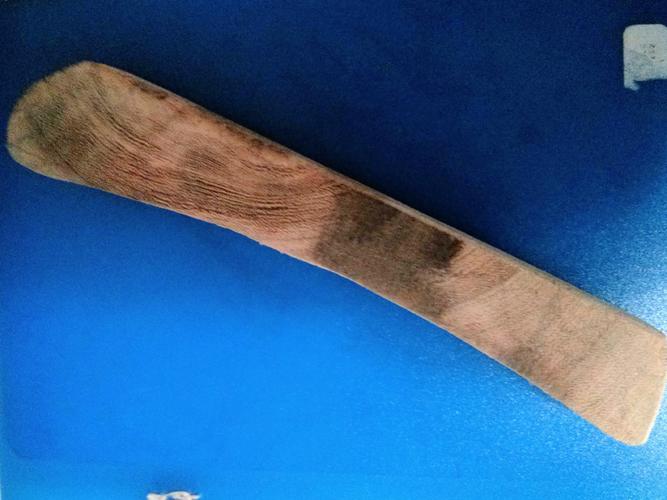Results 1 to 6 of 6
 7Likes
7Likes
Thread: Making a scale: Next steps
-
08-22-2017, 10:20 PM #1Senior Member

- Join Date
- Mar 2017
- Location
- Calgary, Alberta, Canada
- Posts
- 321
Thanked: 41 Making a scale: Next steps
Making a scale: Next steps
Hi everybody,
This is where I got after 3 hours in (somebody else's) workshop. The only power tools I had access was a bench saw and a jigsaw.
Otherwise, this is what I did with a wood file, regular files and sandpaper from a scrap of wood lying around.

Now that I'm back home, I have some sandpaper, hand saw, a jig saw and a drill (and the usual things in a toolbox)
I find that shaping using sandpaper takes forever. I'm thinking of the following steps:
1. rough shaping with a swiss army knife
2. cut the piece with the hand saw
3. smoothen the inside with 50/80 grit sandpaper
4. (you know the usual steps)
Do you see what would get me done faster, given a lack of power tools?
-
08-22-2017, 10:38 PM #2

Yep.!
Check out the library,
"Making scales w/ hand tools"
There's also video tutorials on it as well. Should get ya on the right track.
I cut my slabs with a power saw, then cut the scales from them with a scroll saw, and even the edges with a drum sander, in the drill press, as well as drill the pin holes. All else is done by hand n paper.
If ya want to waste a few days of your life, there's tons of info in the workshop thread, "what are you working on" to be had for the taking.!
Hope this helps...it should.[emoji6]Mike
-
08-23-2017, 12:58 AM #3

80grit paper and a sanding block will shape quickly. Make sure the convex part of the block is smooth to shape the concave part of the scale.
If you don't care where you are, you are not lost.
-
08-23-2017, 01:58 AM #4Senior Member


- Join Date
- Jun 2013
- Location
- Pompano Beach, FL
- Posts
- 4,049
Thanked: 636
A Dremel or power drill with a sanding drum would make sanding the profile easier and quicker.
-
08-24-2017, 01:08 AM #5Sharp Minded Citizen

- Join Date
- Oct 2013
- Location
- Bucharest
- Posts
- 434
Thanked: 156
I used to go to the belt grinder when I began making scales...made a lot of noise and dust.
Over time with experience I learned that buying the correct thickness material...using hand tools and a dremmel with a samding drumb made scale making much easier.
You end up removing less material and working less if you start with a right piece of material...and use adequate tools....and grits.
-
08-24-2017, 02:28 PM #6Senior Member

- Join Date
- Mar 2017
- Location
- Calgary, Alberta, Canada
- Posts
- 321
Thanked: 41
Good points.
I notice that I'm spending a lot of time trying to flatten that piece of wood. That made me realize two things:
a) better start with something that's already flat
b) use better abrasives
I discovered that the sandpaper I had was shedding its grit pretty fast. It was cheap, and it was worth about 0. Perhaps that stuff is useful for some super soft things, but definitely not for 'real work'.



 LinkBack URL
LinkBack URL About LinkBacks
About LinkBacks






 Reply With Quote
Reply With Quote




